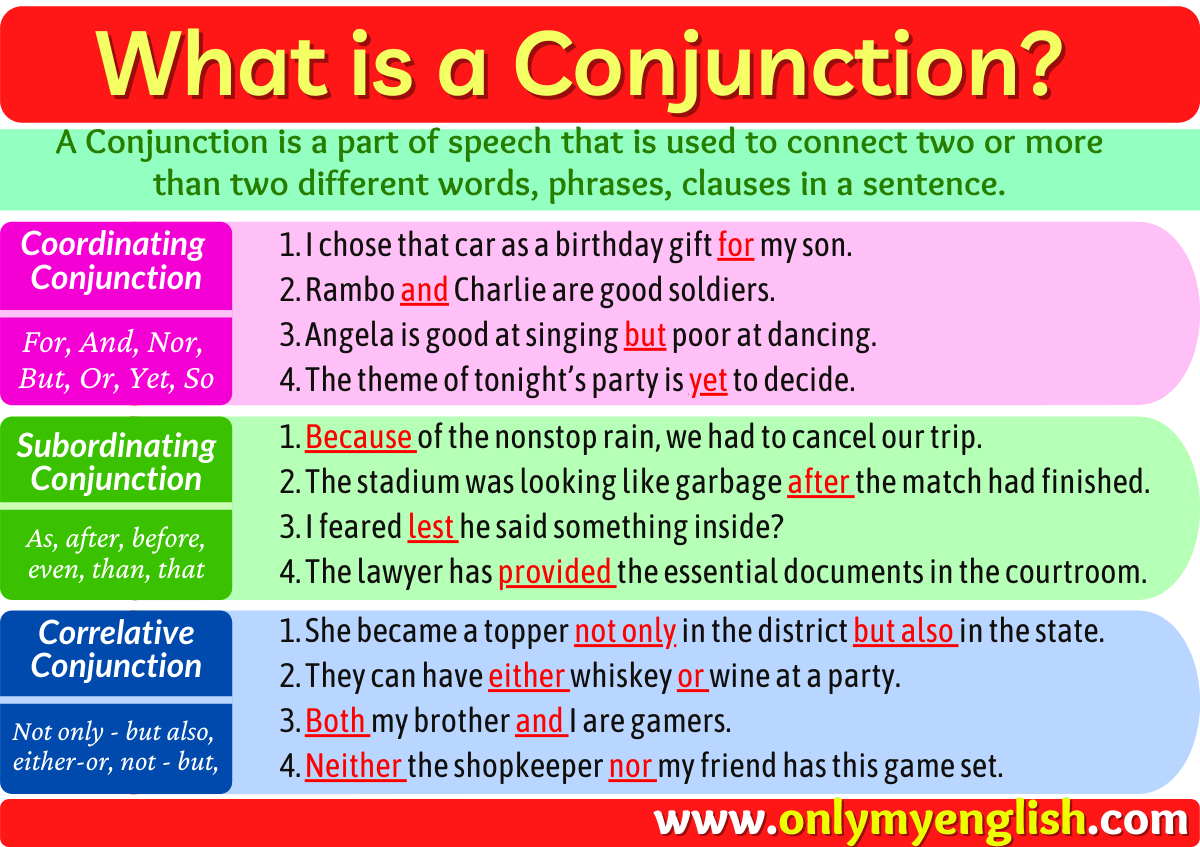Conjunction words play a crucial role in connecting words, phrases, and clauses in a sentence. They help to create smooth and coherent sentences by indicating the relationship between different parts of the sentence. There are various types of conjunction words such as coordinating conjunctions, subordinating conjunctions, and correlative conjunctions. In this article, we will explore examples of conjunction words to better understand how they function in a sentence.
1. Coordinating Conjunctions:
Coordinating conjunctions are used to join words, phrases, or independent clauses that are of equal importance. Some common examples of coordinating conjunctions include:
- and
- but
- or
- nor
- for
- so
2. Subordinating Conjunctions:
Subordinating conjunctions are used to join an independent clause with a dependent clause. They show the relationship between the two clauses. Some common examples of subordinating conjunctions include:
- because
- although
- while
- since
- if
3. Correlative Conjunctions:
Correlative conjunctions are used in pairs to join words, phrases, or clauses that are of equal importance. Some common examples of correlative conjunctions include:
- either…or
- neither…nor
- both…and
- not only…but also
Conjunction words are essential in forming clear and concise sentences. By using the appropriate conjunctions, you can effectively connect ideas and create well-structured sentences. Whether you are using coordinating conjunctions to join independent clauses or subordinating conjunctions to indicate a relationship between clauses, understanding how to use conjunction words will enhance your writing skills.
In conclusion, conjunction words are powerful tools that help to establish the relationship between different parts of a sentence. By using conjunctions such as coordinating, subordinating, and correlative conjunctions, you can create cohesive and coherent sentences. Practice using conjunction words in your writing to improve the flow and clarity of your sentences.
